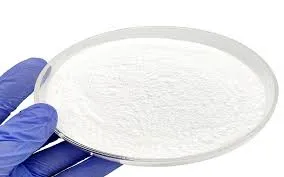Pentoxifylline 500 mg An Overview of Its Uses, Mechanism, and Benefits
Pentoxifylline, commonly marketed under various brand names, is a medication primarily used to improve blood flow in patients suffering from peripheral vascular diseases. This drug is available in a tablet form, most commonly dosed at 500 mg, which is considered effective for various therapeutic applications. Understanding how pentoxifylline works and its clinical significance can help patients and healthcare providers make informed decisions regarding its use.
Mechanism of Action
Pentoxifylline is classified as a xanthine derivative. Its primary mechanism of action involves the modulation of red blood cell deformability and the inhibition of platelet aggregation. By improving the flexibility of red blood cells, pentoxifylline enhances their ability to navigate through narrow or obstructed blood vessels, thereby improving microcirculation. Additionally, by reducing blood viscosity, it makes the blood flow more freely through the capillaries and arterial networks.
Pentoxifylline has anti-inflammatory properties as well. It can help reduce the production of pro-inflammatory cytokines and the activity of phosphodiesterases, leading to vasodilation and a decrease in clot formation. Together, these effects make pentoxifylline a valuable option for conditions characterized by poor blood flow and tissue hypoxia.
Clinical Uses
The primary indication for pentoxifylline 500 mg is in the management of intermittent claudication, a condition characterized by painful muscle cramping in the legs due to inadequate blood flow during physical activities. Patients often experience discomfort when walking, which can significantly impair their quality of life. Clinical studies have shown that pentoxifylline can improve walking distance and reduce associated pain, making it a beneficial treatment for patients with this condition.
Apart from intermittent claudication, pentoxifylline is also utilized in treating other circulatory disorders. For instance, it may be prescribed for diabetic patients suffering from microvascular complications or those experiencing skin ulcers due to poor blood circulation. In some cases, pentoxifylline is employed in the management of ischemic heart disease or to enhance blood flow during peripheral surgeries.
pentoxifylline 500 mg

Dosage and Administration
Pentoxifylline is typically administered in a 500 mg oral dosage, prescribed three times a day. It is recommended to take the medication with food to enhance absorption and minimize gastrointestinal discomfort. Dosage adjustments might be necessary for certain populations, such as individuals with renal impairment, and it is crucial for patients to follow their healthcare providers' instructions closely.
Side Effects and Precautions
While pentoxifylline is generally well tolerated, it is not without potential side effects. Common adverse effects may include gastrointestinal disturbances, such as nausea, vomiting, and diarrhea. In some cases, patients may experience headaches, dizziness, or an upset stomach. Serious side effects, although rare, can include allergic reactions, hypotension, or bleeding complications, particularly in patients taking anticoagulants or antiplatelet medications.
Patients are advised to disclose their complete medical history and any medications they are currently taking to their healthcare provider before starting pentoxifylline. This is especially crucial for those with a history of allergies, bleeding disorders, or significant liver or kidney diseases.
Conclusion
Pentoxifylline 500 mg is a valuable pharmacological tool in the treatment of various conditions associated with poor blood flow. Through its unique mechanism of action—enhancing red blood cell deformability and reducing blood viscosity—it provides symptomatic relief for patients suffering from intermittent claudication and other circulatory issues. While pentoxifylline is effective, it is essential for patients to adhere to prescribed dosages and report any adverse effects to their healthcare provider promptly. As with any medication, informed use is critical to maximizing benefits while minimizing risks. As ongoing research continues to explore new applications for pentoxifylline, it solidifies its place in the realm of vascular health and therapeutic interventions.

